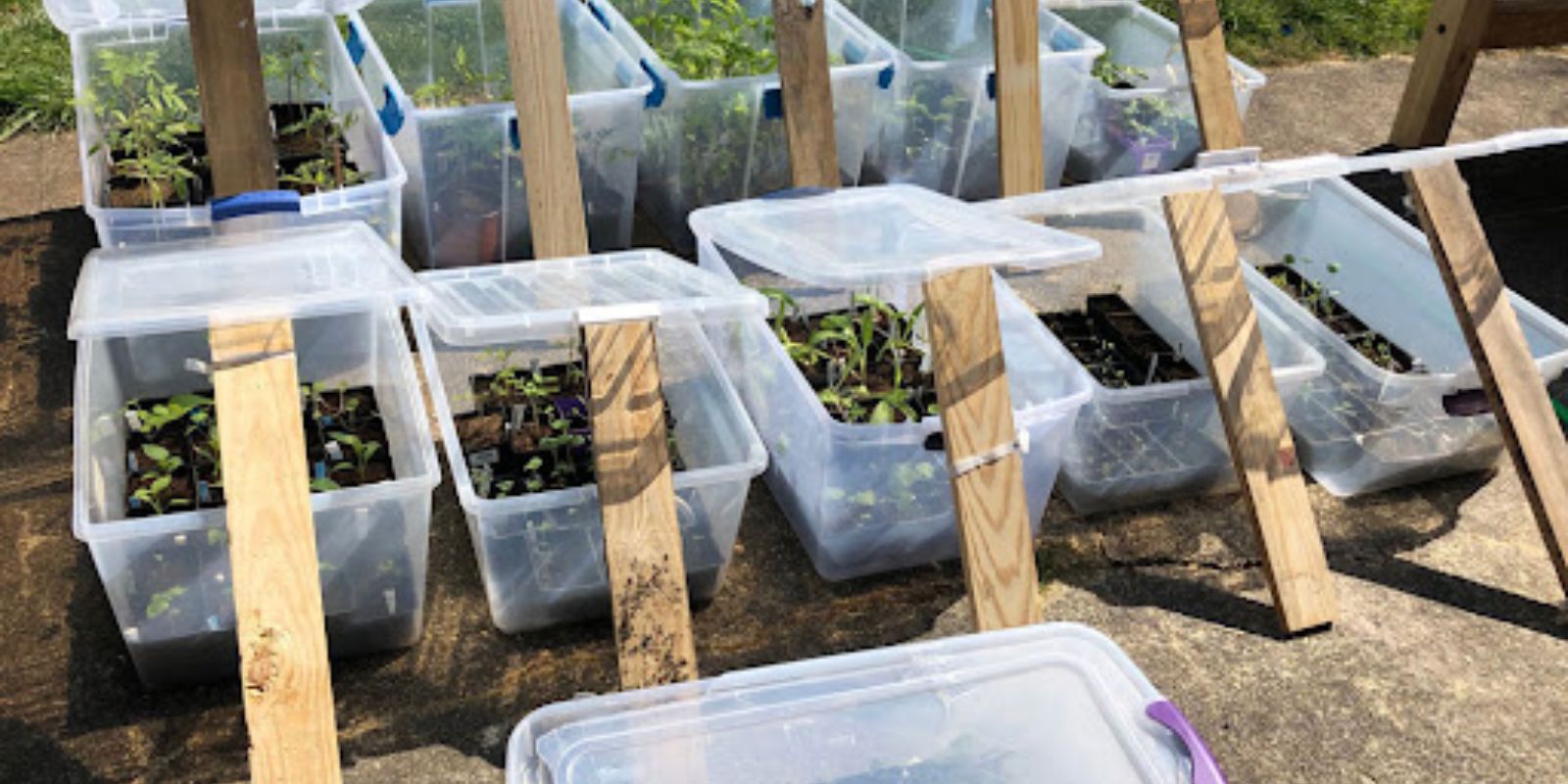For gardening enthusiasts, the challenges of unpredictable weather and seasonal limitations can hinder plant growth and productivity. However, with a bit of creativity, these obstacles can be overcome using everyday materials. One innovative and budget-friendly solution is repurposing plastic tubs as mini-greenhouses. These simple structures create an ideal environment for plants by offering protection from harsh weather, maintaining consistent temperatures, and enhancing humidity.
In this article, we’ll guide you through the step-by-step process of converting plastic tubs into mini-greenhouses, exploring their benefits, practical applications, and how they can elevate your gardening game.
What Are Mini-Greenhouses, and Why Use Plastic Tubs?
Mini-greenhouses are compact structures designed to create a controlled microclimate for plants. They are especially beneficial for protecting seedlings, extending the growing season, and encouraging growth in challenging conditions.
Plastic tubs, commonly found in households, serve as excellent materials for mini-greenhouses due to their transparency, durability, and affordability. By reusing these tubs, you’re also contributing to a more sustainable lifestyle.
Benefits of Using Plastic Tubs as Mini-Greenhouses
- Temperature Control: Plastic tubs trap heat, maintaining a warmer environment for plants, even during cooler days or nights.
- Humidity Retention: The enclosed space helps retain moisture, reducing the need for frequent watering.
- Protection from Pests and Weather: Shield your plants from wind, rain, frost, and pests while still allowing sunlight to reach them.
- Cost-Effective Solution: Repurposing plastic tubs is far cheaper than investing in commercial mini-greenhouses.
- Portability: Lightweight and compact, these mini-greenhouses can be moved as needed to follow the sun or avoid harsh weather.
Step-by-Step Guide: How to Create Plastic Tub Mini-Greenhouses
Step 1: Gather Materials
You’ll need the following:
- Clear plastic tubs with lids (preferably large and transparent).
- A drill or sharp tool to make ventilation holes.
- Soil, stones, or heavy objects to secure the tubs.
- Optional: Thermometer or hygrometer for monitoring temperature and humidity.
Step 2: Choose the Right Location
Select a sunny spot in your garden, patio, or balcony where the tubs will receive at least 6–8 hours of sunlight daily. The location should be level and free from obstructions.
Step 3: Prepare Ventilation Holes
- Drill small holes into the lid of the plastic tub to allow air circulation. Proper ventilation prevents overheating and reduces the risk of mold or fungal growth.
- For colder climates, fewer holes are necessary to retain heat.
Step 4: Position the Tubs Over Plants
- Place the plastic tub upside down, with the lid acting as the base. Ensure the tub fully covers your plants without touching the foliage to prevent damage.
- If you’re using the tub for seed trays, simply place the trays inside the tub and secure the lid.
Step 5: Secure the Edges
Use soil, stones, or heavy objects to anchor the edges of the tub, ensuring it doesn’t get displaced by wind.
Step 6: Monitor and Adjust as Needed
- Check the temperature inside the tub daily. On sunny or warm days, slightly open the lid or remove the tub temporarily to prevent overheating.
- Water your plants as needed by lifting the tub or watering directly through the ventilation holes.
Practical Applications of Plastic Tub Mini-Greenhouses
1. Seed Germination
Plastic tubs create an ideal environment for starting seeds, offering consistent warmth and humidity. Place seed trays or pots inside the tub, and watch your seedlings sprout faster.
2. Protecting Young Plants
Use the tubs to shield young or delicate plants from frost, heavy rain, or strong winds during the early growing season.
3. Extending the Growing Season
Keep plants thriving through colder months by trapping heat during the day and retaining it overnight. This is particularly useful for cold-sensitive crops like tomatoes, peppers, or basil.
4. Growing Herbs Indoors
For those with limited outdoor space, plastic tubs can be used as indoor mini-greenhouses for herbs like mint, parsley, or cilantro. Place them near a sunny window for best results.
Tips for Success
- Choose Transparent Tubs: Ensure the plastic is clear to allow maximum sunlight penetration. Avoid colored or opaque tubs, as they block light.
- Prevent Overheating: Regularly check the temperature inside, especially on sunny days, to prevent your plants from overheating.
- Use for Small Crops: Plastic tub greenhouses are best suited for small plants, seedlings, or herbs. For larger plants, consider using taller tubs or alternative greenhouse structures.
- Clean Regularly: Wash the tubs occasionally to remove dirt or algae buildup, ensuring maximum sunlight exposure.
Common Challenges and How to Address Them
1. Condensation Build-Up
Excess condensation can lead to mold or fungal growth. Increase ventilation by adding more holes or opening the lid slightly during the day.
2. Wind Displacement
Secure the tubs firmly using soil, stones, or even stakes to prevent them from being blown away.
3. Limited Space
For gardeners with limited outdoor space, use multiple smaller tubs instead of one large one to maximize efficiency.
Why This Hack is Perfect for Any Gardener
Whether you’re a seasoned gardener or a beginner, this DIY project is accessible, cost-effective, and versatile. Plastic tubs are readily available and can be repurposed in countless ways. By turning them into mini-greenhouses, you’re not only improving your gardening results but also contributing to sustainable practices by reducing waste.
Environmental Benefits of Using Repurposed Plastic Tubs
This garden hack aligns with eco-friendly practices by giving new life to plastic items that might otherwise end up in landfills. Reusing materials not only reduces waste but also minimizes the environmental footprint of your gardening activities.
Conclusion: Elevate Your Gardening with Plastic Tubs
Plastic tubs as mini-greenhouses are a game-changer for gardeners looking to protect plants, start seeds early, or extend their growing season. This simple yet effective solution offers numerous benefits, from better plant health to sustainable gardening.
Try this DIY project today and watch your garden flourish. Share your creative uses and results with the gardening community! 🌱✨
#GardenHack #MiniGreenhouse #SustainableGardening #DIYGardenProjects #GrowYourOwnFood #UpcycledGardening #PlantLovers

